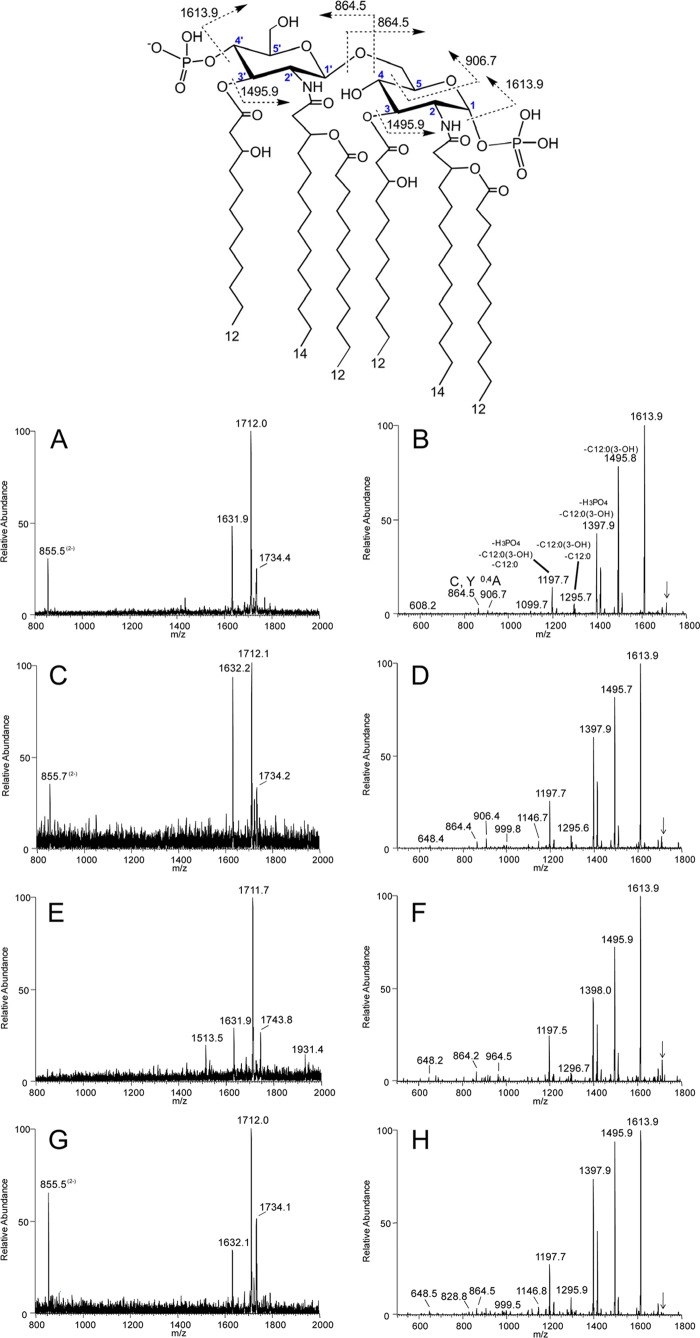Fig 3.
Negative-ion ESI-MS and MS/MS analyses of LA of Neisseria commensals. ESI-MS and MS/MS spectra of LA from N. cinerea strain 14685 (A and B, respectively), N. flavescens strain 4322 (C and D), N. perflava strain 10555 (E and F), and N. subflava strain 52 (G and H) have peaks for DPLA and MPLA [calculated exact masses of the monoisotopic peaks for (M-H)− at m/z 1,712.1 and 1,632.2, respectively], as well as peaks for the doubly charged DPLA (calculated exact mass at m/z 855.6). The MS/MS spectra (B, D, F, and H) of (M-H)− ions at m/z 1,712 (indicated by arrows) of the species are very similar and confirm that the LA moieties are DPLA. Fatty acid (hydroxylaurate, −216 Da, and laurate, −200 Da) and phosphate (H3PO4, −98 Da) losses and cross-ring fragment ions are noted on the MS/MS spectrum of N. cinerea (B). These data support diphosphoryl substitution and lack of PEA on the LA of commensal Neisseria. Top, illustration of the conserved structure of the diphosphorylated LA from Neisseria (m/z 1,712.1), shown with phosphates on the 1 and 4′ positions of diglucosamine. The dotted lines in the structure indicate the potential cleavage products of LA. The numbers shown in blue for the carbon atoms on the N-acetylglucosamine moieties are used to identify proposed sites of cross-ring cleavage, such as that producing the 0,4A-type fragment ions observed at m/z 906 in the spectra shown in panels B and D.

